PONGAMIA
Pongamia
Adans., Fam. Pl. 2: 322, 593. 1763. Parker, For. Fl. Punj. 1918 (Reprint 1973); Zhang & Pedley, Fl. China @ eFloras.org 10: 187; Fl. Pak @ eFloras.org p. 54.
Trees. Stipules caducous. Leaves imparipinnate; stipels absent. Inflorescence axillary raceme; flowers bisexual, zygomorphic, 5-merous, perigynous; bracts small, caducous; bracteoles minute or absent. Calyx campanulate to cupulate, apex truncate, teeth obsolete. Corolla longer than calyx; vexillum orbicular, with 2 calluses on claw, basally auriculate; wings oblong, oblique, auriculate, slightly adherent to keel; keels falcate, apically adherent, apex truncate. Stamens 10, diadelphous (9+1); vexillary stamen free; anthers uniform, basifixed. Monocarpellary, ovary subsessile, with 2 ovules, pubescent; style inflexed, glabrous; stigma terminal, capitate. Fruit flat, coriaceous, fleshy or woody, indehiscent, 1- seeded. Seeds reniform.
One species
Pongamia pinnata
Pongamia pinnata
(L.) Pier., Fl. For. Cochinch. 3(25): t.385. 1899; Parker, For. Fl. Punj. ed. 1: 167. 1918 (Reprint 1973); Fl. China @ eFloras.org 10: 188; Fl. Pak @ eFloras.org p. 55; Cystus pinnatus L., Sp. Pl. 2: 741. 1753; Millettia pinnata (L.) Panigrahi, in Panigrahi & Murti, Fl. Bilaspur Dist. 1: 210. 1989; Pongamia glabra Vent., Jard. Malm.1: 28, t. 28. 1803.
Medium-sized tree, 8-15 m, deciduous, bole usually short, crown spreading, bark smooth, grey, twigs glabrous or tomentose, with dense ashy-grey lenticels. Stipules small, ca. 6 mm long, oblong, obtuse, caducous. Leaves imparipinnate, rachis 20-26 cm long including 5-6 cm long petiole, petiole base pulvinate; leaflets 5-9, opposite, 5-12 cm x 4-10 cm, ovate, ovate-oblong or elliptic; usually shortly abruptly acuminate, glabrous, glossy bright green adaxially, margin entire, base rounded, cuneate or truncate; lateral veins 5-8 pairs, pinnate, ascending, slender, faint; veins prominent beneath; petiolule 5-8 mm long, slender; stipels absent. Inflorescence pedunculate axillary racemes, 15-20 cm long, rachis nodes usually with two flowers, rachis glabrous or puberulous. Flowers bisexual, zygomorphic, 5-merous, perigynous, 1.2-1.5 cm long, white tinged with violet or pinkish. Bracts ovate, acute, ca. 2.5 mm long, caducous. Pedicels 5-10 mm long, very slender. Sepals 5, fused; calyx ca. 3 mm long, cupulate, brown-pubescent without, mouth truncate, obscurely toothed. Corolla papilionaceous, exserted, white or pink, 1.2-1.4 cm long and ca.1.4 cm broad; vexillum suborbicular to orbicular, emarginate, very shortly clawed with 2 calluses, base auriculate outside, thinly sericeous; wings and keel smaller than vexillum; wings obliquely oblong, slightly adhering to keel, base auriculate; keel obtuse, falcate, petals coherent at apex. Stamens 10, diadelphous (9+1), vexillary stamen distinctly free; anthers uniform, versatile or basifixed. Ovary ca. 10 mm long, finely pubescent, unilocular with 2 ovules, placentation marginal; style filiform, incurved, ca. 3 mm long; stigma small, capitate, terminal, hairs below stigma. Legumes 3.5-5.0 cm x 1.5-2.5 cm, woody, obliquely oblong, covered with obscure warts, pointed at both ends, indehiscent. Seeds usually 1, reniform.
Common Names: Hongay Oil Tree, Indian Beech Tree, Pongame Oil Tree, Pongam Tree; Kaling, Karanj, Naktmaal, Papar, Papra (Hindi); Sukhchain (Punjabi)
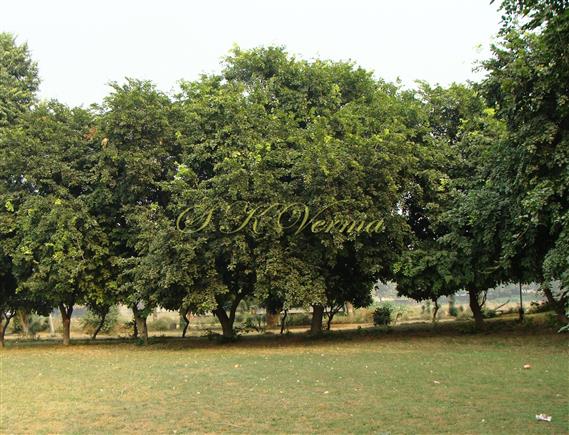
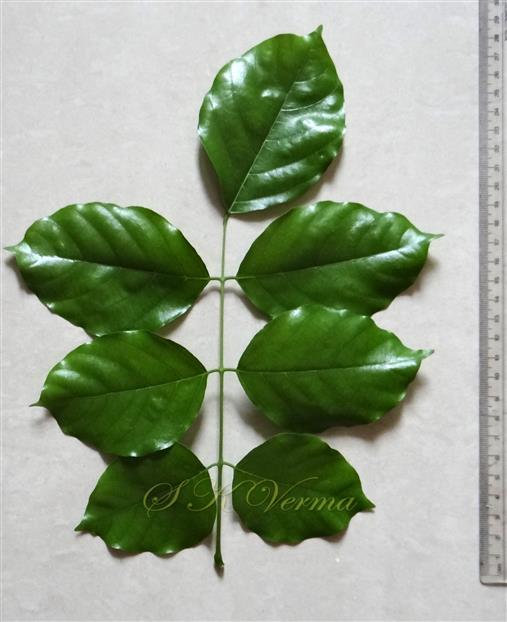
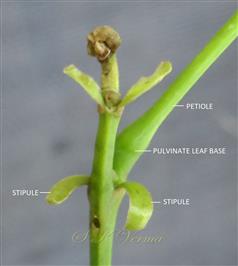
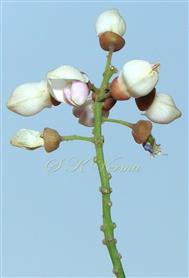
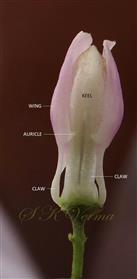
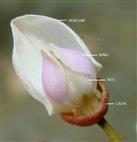
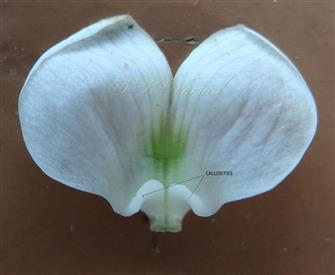
-DSC05120.jpg)
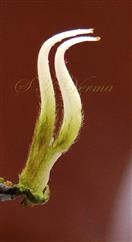
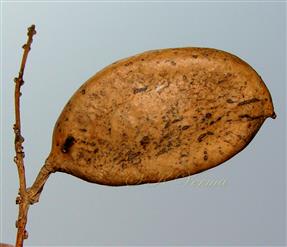








-DSC05120.jpg)

